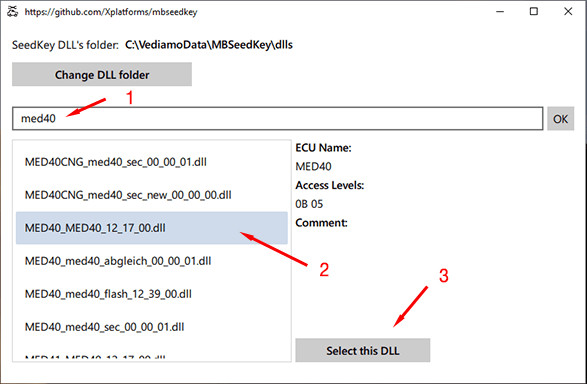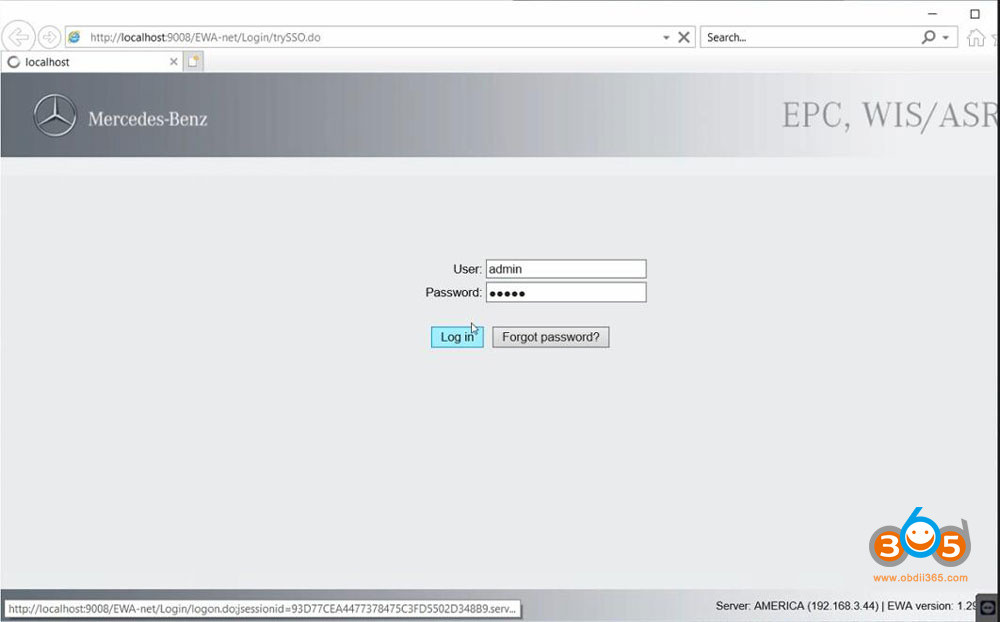**What is the “Retrofitting” Function in Xentry? A Comprehensive Guide**
The “Retrofitting” function in Xentry allows you to add or update features in a vehicle that were not originally installed during manufacturing. CARDIAGTECH.NET presents a detailed guide on this powerful function, exploring its applications, benefits, and how it can enhance vehicle capabilities and value, while providing optimal diagnostic solutions. This article will cover everything from system resources to straightforward setup, ensuring you’re well-versed in the retrofitting realm.
1. Understanding the Retrofitting Function in Xentry
The retrofitting function in Xentry is a diagnostic tool that allows technicians to add new features or functionalities to a vehicle that were not originally included when the vehicle was manufactured. This can range from installing new modules to updating software to enable features that were previously disabled or unavailable.
1.1. What Does Retrofitting Actually Mean?
Retrofitting involves adding components or systems to a vehicle that were not part of its original design. According to a study by the University of California, retrofitting can significantly improve a vehicle’s functionality and resale value. In the automotive world, retrofitting is akin to upgrading a home with modern amenities. Think of it as giving your car a new lease on life with features it never had before.
1.2. How Xentry Facilitates Retrofitting
Xentry, Mercedes-Benz’s diagnostic software, provides the interface and tools necessary to perform retrofitting. It allows technicians to:
- Identify compatible components.
- Program and configure new modules.
- Update software to enable new features.
The latest XENTRY package includes hardware and software, plus a subscription for software updates every 60 days. The XENTRY kit comes in a sturdy carrying/storage case, and includes: XENTRY Connect main control unit, XENTRY Tab, the multi-function unit that also serves as a monitor/display, Blu-ray drive, Software/DVD discs and all necessary cabling and power supplies.
1.3. The Key Functions Enabled by Xentry
XENTRY/SDS enables three key functions:
- Comprehensive vehicle identification: Goes beyond the VIN to identify the “Baumeister” number, revealing all vehicle attributes including chassis details and options.
- Diagnosis: Provides comprehensive diagnostic procedures, suggestions, and cautions, revealing known and undiscovered faults, and facilitates post-repair quality control.
- Programming and software updates: Allows reprogramming of existing control units, programming of new replacement components, and installation of software updates.
1.4. Benefits of Using Xentry for Retrofitting
Retrofitting with Xentry offers numerous advantages:
- Enhanced Vehicle Functionality: Adds modern features to older vehicles.
- Increased Vehicle Value: Retrofitted vehicles often have a higher resale value.
- Improved Driving Experience: New features can improve comfort, safety, and convenience.
- Customization: Tailor the vehicle to specific needs and preferences.
1.5. Addressing the Technical Challenges
While retrofitting offers many benefits, it also presents technical challenges. Xentry helps overcome these challenges by providing:
- Detailed instructions and procedures.
- Compatibility checks to ensure proper integration.
- Troubleshooting tools to resolve issues.
2. Identifying Retrofitting Opportunities
Knowing when and what to retrofit can significantly enhance a vehicle’s capabilities. Xentry helps identify these opportunities by providing detailed vehicle information and compatibility data.
2.1. Assessing Vehicle Compatibility
Before starting any retrofitting project, it’s crucial to assess the vehicle’s compatibility with the desired upgrades. Xentry provides detailed information about the vehicle’s systems, including:
- Control unit versions.
- Software levels.
- Hardware configurations.
2.2. Common Retrofitting Options
Here are some common retrofitting options that can be performed using Xentry:
- Navigation Systems: Adding or upgrading the navigation system.
- Parking Sensors: Installing parking sensors for added safety.
- Bluetooth Connectivity: Enabling Bluetooth for hands-free calling and audio streaming.
- Adaptive Cruise Control: Adding adaptive cruise control for enhanced driving comfort.
- LED Lighting: Upgrading to LED headlights or taillights for better visibility.
- Rear View Cameras: Installing rear view cameras for safer reversing.
2.3. Evaluating the Cost-Benefit Ratio
Consider the cost-benefit ratio of each retrofitting option. Evaluate the cost of parts, labor, and potential benefits to determine if the upgrade is worthwhile. CARDIAGTECH.NET can help you source quality parts at competitive prices.
2.4. Consulting Vehicle Specifications
Refer to the vehicle’s specifications and technical documentation in Xentry to understand its capabilities and limitations. This information can help you make informed decisions about which retrofitting options are feasible and beneficial.
2.5. Leveraging Community Knowledge
Engage with online communities and forums to gather insights and experiences from other vehicle owners who have performed similar retrofits. This can provide valuable tips, warnings, and recommendations.
3. Step-by-Step Guide to Retrofitting with Xentry
Retrofitting with Xentry involves a series of steps to ensure a successful upgrade. Here’s a detailed guide to help you through the process.
3.1. Initializing Xentry
- Connect to Vehicle: Attach Xentry to the vehicle via the OBD connector.
- Verify Connection: Ensure the control software shows that the XENTRY Connect drive is ready.
- Open Software: Launch the Xentry software and tap on the Diagnostics icon.
- Select Model: Choose the specific vehicle model being serviced.
- Adjust Settings: Open the diagnostics field to adjust various settings using the Diagnostics Desktop.
- Choose Profile: Select the appropriate profile—Workshop Network or Direct Connection (Service 24-hour mode).
3.2. Identifying the Vehicle
- Enter VIN: Preferably, enter the vehicle’s VIN to identify it accurately.
- Automatic VIN Retrieval: Alternatively, click on the appropriate vehicle model designation and select the Diagnostics icon; Xentry will automatically pull the VIN directly from the vehicle via the OBD connection.
- Manual Selection: If the VIN is unavailable, select the Passenger Car tab, then choose a model and sub-model, along with the appropriate engine and transmission selection.
3.3. Navigating the Xentry Interface
- Main Navigation Bar: Use the main navigation bar on the left side of the screen, with icons listed logically from top to bottom.
- Icon Functions:
- Diagnosis: Access diagnosis via XENTRY or DAS, depending on the model series.
- TIPS: Access the TIPS page (requires network connection and PAI User ID).
- WIS/ASRA net: Log into EPC net or the WIS/ASRA net server.
- EPC net: Connect online to EPC net or WIS/ASRA net server with password.
- System Settings: Adjust language, date/time, etc.
- Exit: Close XENTRY.
- Additional Icons: Use icons for Print and Help functions as needed.
3.4. Using the Quick Test Function
- Launch Quick Test: Begin by running XENTRY’s Quick Test of all vehicle systems.
- Select Functions View: Choose Functions View to see the units that control the selected feature.
- View Status Line: Monitor the status line for key parameters such as battery voltage, connection status, and ignition switch status.
- Interpret Results: Review the results to identify any issues or areas needing attention.
3.5. Performing Actuations and Tests
- Access Actuations Feature: Use the Actuations feature to determine whether a control unit can regulate an output.
- Manipulate Control Unit: Use the on/off function to manipulate a control unit and operate the driver that controls the system outputs.
- Measure Voltage: Measure the voltage on the control side of the component to determine if the control unit can supply power or a ground pathway to the control circuit.
- Use Tests Tab: Expand on the previous SDS software actuations tab with the Tests tab.
- Perform Static and Dynamic Tests: Conduct static and dynamic tests for each system in a particular control unit.
- Simulate Self-Diagnostic Functions: Simulate the self-diagnostic functions that run automatically.
3.6. Updating Software and Programming Modules
- Access Software Updates: Navigate to the software update section in Xentry.
- Select Modules: Choose the specific modules that need updating or programming.
- Follow Prompts: Follow the on-screen prompts to complete the software update process.
- Verify Installation: Confirm that the software has been successfully installed.
3.7. Exiting Xentry Properly
- Exit Diagnostics: Choose to exit XENTRY diagnostics.
- Log Off Service: Alternatively, log off from the service to exit all on-line applications, log out the user, but keep XENTRY and XENTRY Diagnostics open.
3.8. Important Considerations
- Battery Voltage: Keep the engine off and the ignition key in the Run position during updates. Use a battery voltage maintainer connected to the battery cable lugs.
- CAN Interference: Ensure other control units on the CAN are “asleep” and not transmitting data while updating software.
4. Advanced Retrofitting Techniques
For those looking to push the boundaries of vehicle customization, Xentry offers advanced retrofitting techniques that require specialized knowledge and skills.
4.1. Custom Coding
Custom coding involves modifying the vehicle’s software to enable unique features or functions that are not available through standard retrofitting options.
4.2. Module Swapping
Module swapping involves replacing existing control units with newer or more advanced units to enhance vehicle performance or add new capabilities.
4.3. Integrating Aftermarket Components
Xentry can be used to integrate aftermarket components into the vehicle’s systems, allowing for seamless operation and control.
4.4. Troubleshooting Complex Issues
Advanced retrofitting may involve troubleshooting complex issues that require in-depth knowledge of the vehicle’s systems and diagnostic tools.
4.5. Seeking Professional Assistance
Consider seeking professional assistance from experienced technicians who specialize in advanced retrofitting techniques.
5. Common Challenges and Solutions
Retrofitting can sometimes present challenges. Here are some common issues and how to address them using Xentry.
5.1. Compatibility Issues
Challenge: The new component is not compatible with the vehicle’s existing systems.
Solution: Use Xentry to verify compatibility before installation. Check part numbers, software versions, and hardware configurations to ensure they match.
5.2. Software Conflicts
Challenge: The new software conflicts with existing software, causing malfunctions.
Solution: Update all related software to the latest versions using Xentry. Ensure that all software is compatible with the vehicle’s systems.
5.3. Communication Errors
Challenge: The new module is not communicating with the vehicle’s systems.
Solution: Check all connections and wiring for damage or corrosion. Use Xentry to diagnose communication errors and identify the source of the problem.
5.4. Coding Problems
Challenge: The new component is not properly coded, causing it to malfunction.
Solution: Use Xentry to recode the component according to the manufacturer’s specifications. Double-check all coding parameters to ensure they are correct.
5.5. Power Supply Issues
Challenge: The new component is not receiving enough power, causing it to fail.
Solution: Check the power supply to the component, including wiring, fuses, and relays. Ensure that the power supply meets the component’s requirements.
6. Optimizing Your Xentry Setup
To maximize the efficiency and effectiveness of Xentry, it’s essential to optimize your setup and workflow.
6.1. Hardware and Software Updates
Keep your Xentry hardware and software up to date with the latest versions. This ensures that you have access to the newest features, bug fixes, and compatibility updates. The latest XENTRY package includes hardware and software, plus a subscription for software updates every 60 days.
6.2. Network Configuration
Configure your network settings to ensure a stable and reliable connection. This is crucial for accessing online resources, downloading updates, and communicating with the vehicle. The system includes expert configuration options to meet the network and internet needs of various shop setups.
6.3. User Profiles
Create user profiles for each technician to track their activities, preferences, and settings. This can improve efficiency and accountability.
6.4. Data Backup
Regularly back up your Xentry data to prevent data loss in case of hardware failure or other issues.
6.5. Training and Certification
Provide ongoing training and certification for your technicians to ensure they are proficient in using Xentry and performing retrofitting procedures.
7. Real-World Examples of Retrofitting
To illustrate the power and versatility of Xentry, here are some real-world examples of successful retrofitting projects.
7.1. Enhancing an Older Mercedes-Benz C-Class
Scenario: A customer wants to add modern features to their 2010 Mercedes-Benz C-Class.
Retrofit:
- Installation of a new navigation system with updated maps and features.
- Addition of parking sensors for improved safety and convenience.
- Enabling Bluetooth connectivity for hands-free calling and audio streaming.
Outcome: The customer is thrilled with the enhanced functionality and modern features of their vehicle.
7.2. Upgrading a Mercedes-Benz E-Class for Comfort
Scenario: A customer wants to improve the driving experience in their 2015 Mercedes-Benz E-Class.
Retrofit:
- Installation of adaptive cruise control for enhanced driving comfort on long trips.
- Upgrade to LED headlights for better visibility and a modern look.
- Addition of a rear-view camera for safer reversing and parking.
Outcome: The customer enjoys a more comfortable and safer driving experience.
7.3. Modernizing a Classic Mercedes-Benz S-Class
Scenario: A customer wants to modernize their classic 1990 Mercedes-Benz S-Class.
Retrofit:
- Installation of a modern audio system with smartphone integration.
- Addition of remote keyless entry for added convenience.
- Upgrade to LED interior lighting for a more contemporary look.
Outcome: The customer appreciates the blend of classic styling with modern technology.
8. Why Choose CARDIAGTECH.NET for Your Xentry Needs?
At CARDIAGTECH.NET, we understand the importance of having the right tools and expertise to perform successful retrofitting projects. Here’s why you should choose us for your Xentry needs:
8.1. Expertise and Experience
We have extensive experience in providing Xentry solutions to automotive professionals. Our team has the knowledge and skills to help you with all your retrofitting needs.
8.2. Quality Products
We offer only the highest quality Xentry systems and accessories, ensuring reliable performance and accurate results.
8.3. Competitive Prices
We offer competitive prices on all our Xentry products and services, making it affordable to upgrade your diagnostic capabilities.
8.4. Excellent Customer Support
We provide excellent customer support to assist you with any questions or issues you may have. Our team is always available to help you get the most out of your Xentry system.
8.5. Comprehensive Solutions
We offer comprehensive Xentry solutions that include hardware, software, and training, providing you with everything you need to succeed.
9. The Future of Retrofitting
As technology continues to evolve, the possibilities for retrofitting will only expand. Xentry will play a crucial role in enabling these advancements.
9.1. Emerging Technologies
Emerging technologies such as autonomous driving, electric vehicles, and connected car services will create new opportunities for retrofitting.
9.2. Software-Defined Vehicles
The rise of software-defined vehicles will make retrofitting even more accessible, as new features can be added or updated through software updates.
9.3. Customization and Personalization
Retrofitting will become increasingly focused on customization and personalization, allowing vehicle owners to tailor their vehicles to their specific needs and preferences.
9.4. Sustainability
Retrofitting can contribute to sustainability by extending the lifespan of existing vehicles and reducing the need for new production.
9.5. Integration with Smart Devices
The integration of vehicles with smart devices and the Internet of Things (IoT) will create new possibilities for retrofitting and connectivity.
10. FAQs About the “Retrofitting” Function in Xentry
Here are some frequently asked questions about the “Retrofitting” function in Xentry:
10.1. What is the “Retrofitting” function in Xentry?
The “Retrofitting” function in Xentry allows you to add or update features in a vehicle that were not originally installed during manufacturing, enhancing functionality and value.
10.2. What types of retrofits can be performed with Xentry?
Xentry can be used for various retrofits, including navigation systems, parking sensors, Bluetooth connectivity, adaptive cruise control, LED lighting, and rear-view cameras.
10.3. Is retrofitting with Xentry difficult?
Retrofitting can be complex, but Xentry provides detailed instructions and procedures to simplify the process. Professional assistance is recommended for advanced retrofits.
10.4. What are the benefits of retrofitting?
Retrofitting enhances vehicle functionality, increases resale value, improves the driving experience, and allows for customization.
10.5. How do I ensure compatibility when retrofitting?
Use Xentry to verify compatibility before installation by checking part numbers, software versions, and hardware configurations.
10.6. What should I do if I encounter software conflicts during retrofitting?
Update all related software to the latest versions using Xentry to ensure compatibility with the vehicle’s systems.
10.7. How can I optimize my Xentry setup for retrofitting?
Keep your hardware and software updated, configure network settings, create user profiles, and regularly back up your data.
10.8. Can retrofitting contribute to sustainability?
Yes, retrofitting extends the lifespan of existing vehicles and reduces the need for new production, contributing to sustainability.
10.9. What emerging technologies will impact retrofitting?
Emerging technologies like autonomous driving, electric vehicles, and connected car services will create new retrofitting opportunities.
10.10. Where can I get reliable Xentry systems and support?
CARDIAGTECH.NET offers high-quality Xentry systems, competitive prices, and excellent customer support for all your retrofitting needs.
Retrofitting with Xentry opens up a world of possibilities for enhancing vehicle capabilities and value. Whether you’re looking to add modern features to an older vehicle or customize your ride to your specific preferences, Xentry provides the tools and resources you need to succeed. Trust CARDIAGTECH.NET to provide the expertise and support you need to get the job done right.
Ready to transform your vehicle with the power of Xentry? Contact CARDIAGTECH.NET today at 276 Reock St, City of Orange, NJ 07050, United States, or call us on Whatsapp at +1 (641) 206-8880. Let us help you unlock the full potential of your vehicle and enhance your driving experience. Visit CARDIAGTECH.NET now for more information and to explore our range of diagnostic solutions.





